Hardcore hardtails feel like a particularly British phenomenon. Think about mucking about on a slack-angled bike with no rear suspension, and chances are you’re imagining a rowdy slip-and-slide on a track scratched straight down the fall line by folks who should know better.
Hardtail mountain bikes such as this pair from Ragley and Whyte are designed to eat this stuff up, along with all the greasy linked turns, steepness and daft fly-offs you can chuck at them. Not to mention the odd jump session, some trail-centre laps or even the occasional big pedalling-heavy day in the countryside.
UK brands kickstarted this category in the first place and really celebrate this side of mountain biking culture. Therefore, it’s unsurprising that the Mmmbop and 905 tested here are built for messing about in the woods as much as for getting from point to point off-road as quickly as possible.
And, since both brands have been at the forefront of aggro hardtail design for years, you’d hope they know a thing or two about what makes one sing by now.
Both bikes are aluminium-framed with front suspension and 650b (aka 27.5in) wheels. They're no-nonsense, tough and easy to chuck about. Wear your jeans and hoodie on them to kick about at the pump track or jumps, or don your trendy riding kit to chase your mates on full-suspension mountain bikes down proper downhill tracks.
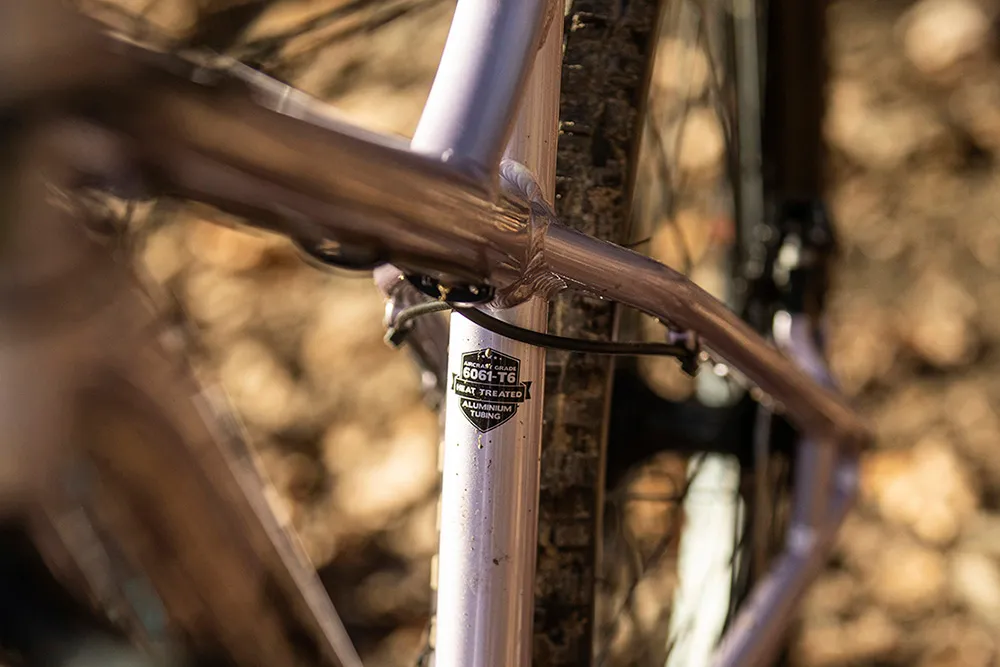
Slack geometry is a key ingredient of this versatility, keeping you upright and off your backside in the woods.
Both bikes here have powerful four-pot brakes and grippy mountain bike tyres to maximise downhill capability on faster and steeper tracks. A UK hardcore hardtail also needs to be reliable enough to handle winter wetness, with plenty of mud clearance.
Obviously, you don’t have to ride exclusively gnarly trails on these bikes. However, with their slack geometry and mid-size wheels pumping up manoeuvrability and liveliness, our pair lean more towards playtime than big distances or adventure days in the mountains.
For that kind of riding, a modern 29er hardtail is probably a better fit.
Whyte offers the 905 only through local bike shops, while many of Ragley’s sales come via online giants Wiggle/CRC. That helps explain the price difference of £100 in the Mmmbop’s favour, even though it has some higher-level kit. Whether that swings things away from the low-slung and low-to-the-floor 905, you’ll need to read on to find out.
One spoiler we will reveal is that, although both bikes have alloy frames, 650b wheels and head angles within half a degree of one another, it’s remarkable how differently they ride on UK winter trails.
Introducing the bikes
Ragley Mmmbop 1.0
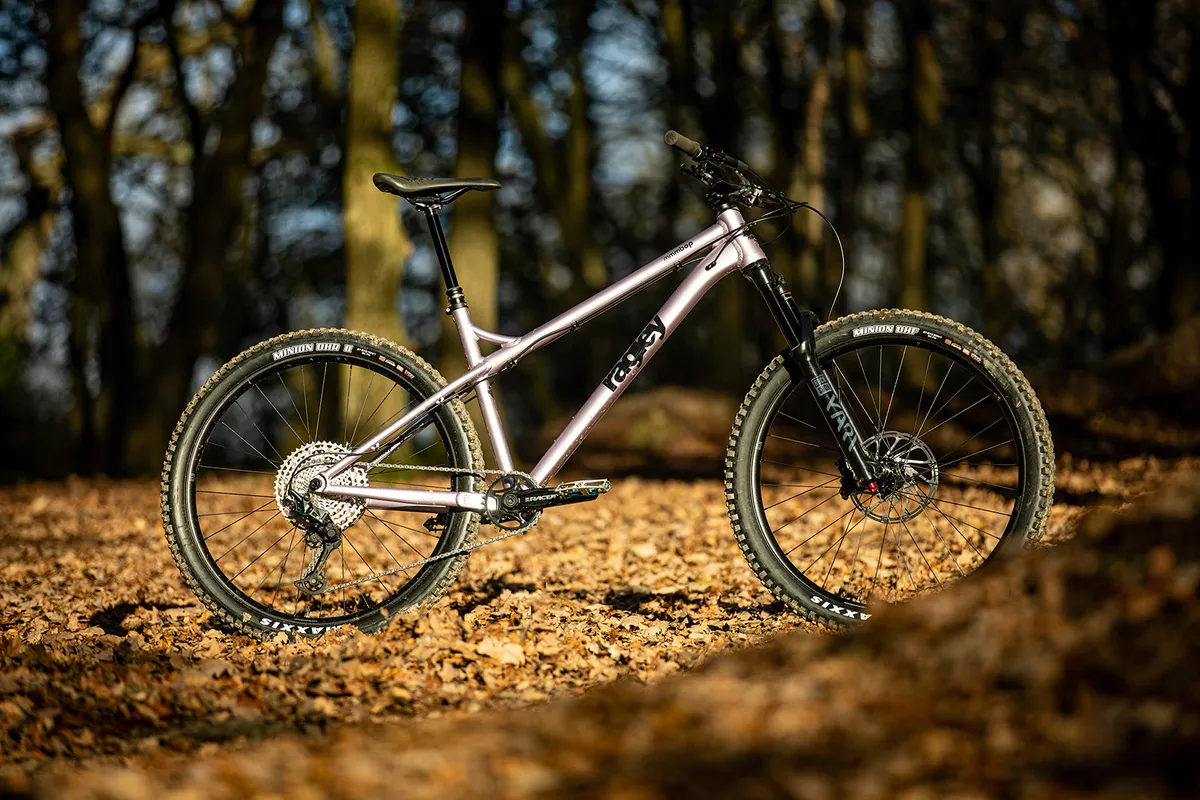
Slack-angled and aggressive-looking, the Mmmbop frame sports a funky metallic lilac paintjob on its fat tubes.
Ragley has all the kit essentials sorted, with a chunky 150mm-travel RockShox Yari fork, Maxxis tyres, four-pot brakes and a Brand-X dropper seatpost.
The Shimano SLX-based 12-speed drivetrain is a highlight, too, with gears turning on a massive 10-51t Shimano Deore cassette and stiff Race Face cranks.
Ragley Mmmbop 1.0 details
- Skinny stays: Ragley uses slimmer (and thus flexier) tubes for the Mmmbop’s rear end, which add comfort and damping, both when stood up and sat down
- Burly fork: Sharing its sturdy chassis with RockShox’s beefy Lyrik enduro fork, the Yari steers precisely
- Sorted shifting: The Shimano SLX/Deore drivetrain is a cut above in terms of smoothness and solidity
- Strong stoppers: SRAM’s new DB8 mineral-oil brakes are impressively powerful and have a smooth action
- Right-on rubber: The Maxxis Minion DHF/R II combo is perfect for the majority of UK riding, with a puncture-resistant EXO casing and superb grip
Ragley Mmmbop 1.0 specifications
- Sizes: S, M, L, XL (L size tested)
- Weight: 13.7kg, without pedals
- Frame: Butted 6061-T6 aluminium alloy
- Fork: RockShox Yari RC, 150mm travel
- Brakes: SRAM DB8, 200/180mm CenterLine rotors
- Cranks: Race Face Ride (1x12)
- Cassette: Shimano Deore
- Chain: Shimano Deore
- Shifter: Shimano SLX
- Derailleur: Shimano SLX
- Wheelset: Nukeproof Neutron wheels
- Tyres: Maxxis Minion DHF EXO 3C MaxxTerra 27.5x2.5in WT (f) and Minion DHR II EXO 3C Maxx Terra 27.5x2.4in WT (r)
- Bar: Ragley, 800mm
- Grips: Ragley A20 Compound
- Stem: Ragley, 50mm
- Seatpost: Brand-X Ascend, 170mm
- Saddle: Ragley
- Price: £2,000 / $2,000
Ragley Mmmbop 1.0 geometry
| | S | M | L | XL |
|---|---|---|---|---|
| Seat angle (degrees) | 74 | 74 | 74 | 74 |
| Head angle (degrees) | 63.75 | 63.75 | 63.75 | 63.75 |
| Chainstay (mm) | 425 | 425 | 425 | 425 |
| Seat tube (mm) | 380 | 420 | 460 | 500 |
| Top tube (mm) | 595 | 617 | 640 | 663 |
| Head tube (mm) | 110 | 120 | 130 | 140 |
| Fork offset (mm) | 42 | 42 | 42 | 42 |
| Bottom bracket drop (mm) | 45 | 45 | 45 | 45 |
| Wheelbase (mm) | 1,167 | 1,192 | 1,217 | 1,241 |
| Standover (mm) | 740.5 | 750 | 758 | 778 |
| Stack (mm) | 610 | 619 | 628 | 637 |
| Reach (mm) | 420 | 440 | 460 | 480 |
Whyte 905
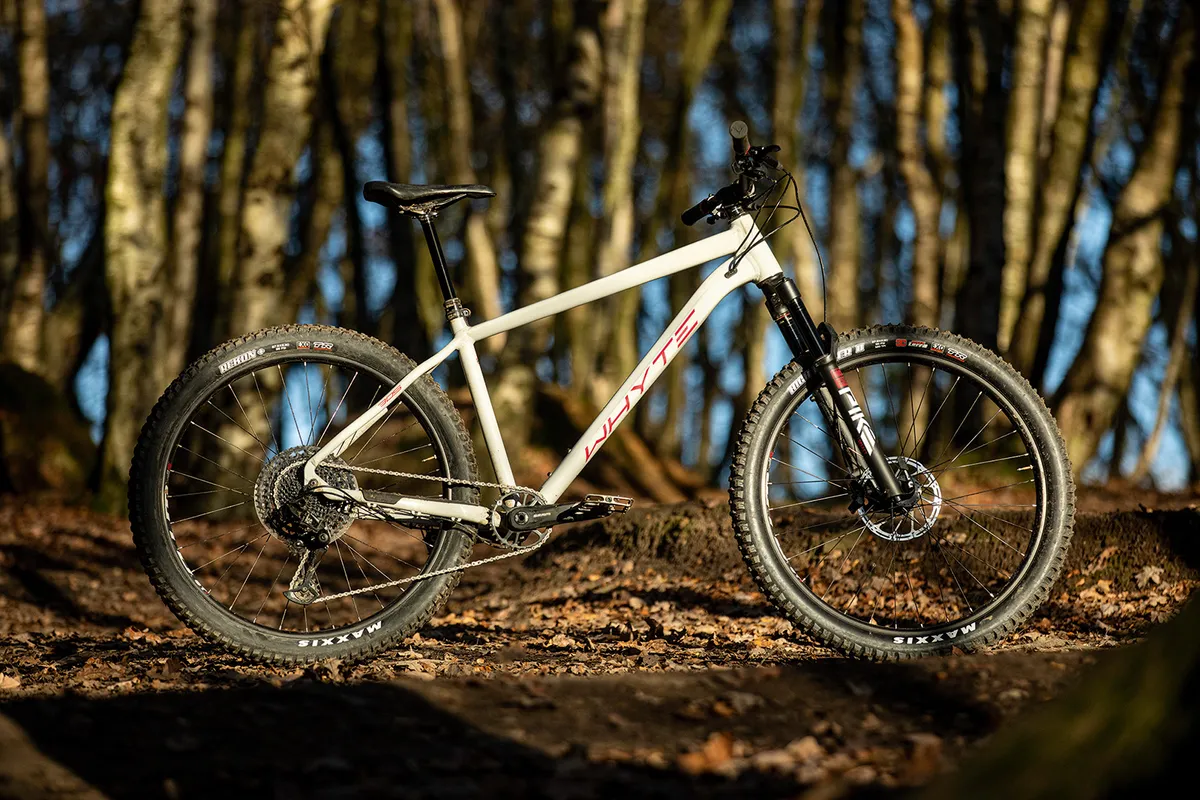
The fourth-generation 905 has a super-low bottom bracket, which sits less than 300mm off the ground, even with the fatter tyres specced here.
Its curvy rear stays (to allow greater mud clearance) are also considerably longer than on much of the hardtail competition, at 440mm.
Kit-wise, you get a latest-generation RockShox Pike fork with 130mm of travel, a 1x12 SRAM NX Eagle drivetrain and a seatpost with 170mm of drop.
Whyte 905 details
- Tall order: A higher top tube gives the Whyte a more traditional, triangular frame appearance
- Plus or minus?: The 2.8in ‘plus’ tyres boost comfort and control in some conditions, but are sketchy in others
- Pressure drop: They also need to be run at lower pressures to smooth out bumps, so, while they roll pretty well off-road, they can feel a bit draggy on tarmac and smoother fire roads, not helped by their wide tread and the heavier WTB wheels
- Plush performer: The latest RockShox Pike Select RC fork offers good support and suppleness, and you can access all the travel if you run the correct sag
- Short shrift: The 905’s stubby stem, correspondingly short fork offset and grippy front tyre combine to provide perfectly balanced, controlled and poised steering
Whyte 905 specifications
- Sizes: S, M, L, XL (L size tested)
- Weight: 13.5kg, without pedals
- Frame: Multi-butted 6061-T6 aluminium alloy
- Fork: RockShox Pike Select RC, 130mm travel
- Brakes: SRAM Guide T, 180mm rotors
- Cranks: SRAM X1 Eagle, X-SYNC 2, Direct Mount 32T
- Cassette: SRAM PG-1210 Eagle, 11-50, 12-speed
- Chain: SRAM NX Eagle, 12-speed
- Shifter: SRAM NX Eagle, MMX, 12-speed
- Derailleur: SRAM NX Eagle, 12-speed
- Wheelset: WTB ST i35 TCS 2.0 wheels
- Tyres: Maxxis High Roller II EXO 3C MaxxTerra (f) and Maxxis Rekon EXO (r) 27.5x2.8in
- Bar: Whyte, 780mm
- Grips: Whyte Lock-on Enduro Grip
- Stem: Whyte Gravity, 35mm
- Seatpost: Whyte Drop-it, 170mm
- Saddle: Whyte
- Price: £2,099
Whyte 905 geometry
| | S | M | L | XL |
|---|---|---|---|---|
| Seat angle (degrees) | 74.5 | 74.5 | 74.5 | 74.5 |
| Head angle (degrees) | 64.5 | 64.5 | 64.5 | 64.5 |
| Chainstay (mm) | 440 | 440 | 440 | 440 |
| Seat tube (mm) | 406.2 | 431 | 457 | 483 |
| Top tube (mm) | 600 | 627 | 654 | 682 |
| Head tube (mm) | 120 | 130 | 140 | 150 |
| Bottom bracket height (mm) | 297.5 | 297.5 | 297.5 | 297.5 |
| Wheelbase (mm) | 1,173 | 1,203 | 1,228 | 1,258 |
| Standover (mm) | 783 | 800 | 817 | 834 |
| Stack (mm) | 624 | 633 | 644 | 651 |
| Reach (mm) | 427 | 454 | 476 | 501 |
How does the Ragley Mmmbop 1.0 compare to the Whyte 905?
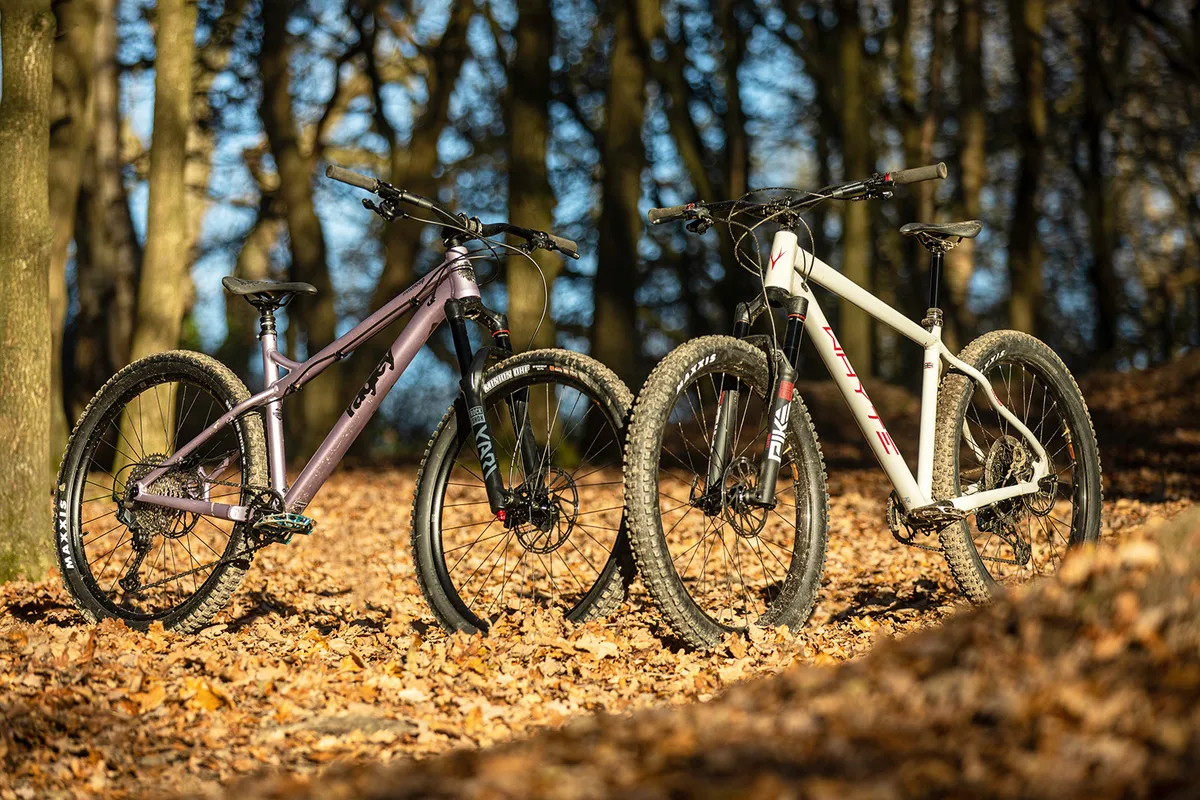
Ragley and Whyte both weld their frames from the same 6,000-series aluminium, offer vaguely similar geometry and include up-to-date features such as Boost rear-axle spacing.
This doesn’t mean the bikes look alike, though, with the Mmmbop a little lower-slung at the top tube and the 905 more upright. Dig deeper and there are even more important differences in shape, most notably in the positioning of the cranks relative to the wheel axles, but also in terms of reach, which is the best indicator of actual frame length.
The Ragley looks lower and longer, but that’s an optical illusion. With a reach of 460mm, the large size we tested isn’t short for a hardtail, but the equivalent 905 is lengthier, at 474mm.
That extends up to a whopping 501mm on the XL size, too, whereas the Mmmbop tops out at 480mm.
On the trail, this difference in sizing is less noticeable than you’d imagine, though. That’s because the reach on a hardtail effectively gets longer as the suspension fork compresses, pulling your hands forward and down.
This ‘stretching’ of the rider is more pronounced than on a full-sus bike that compresses at both ends, especially on a hardtail with a longer-travel fork.

While this extra reach is generally a good thing, the head angle on a hardtail also steepens considerably as the fork eats into its travel, affecting steering and handling deep in the stroke.
Our experience tells us hardtails have an upper fork-travel limit at which their geometry remains stable and intuitive. The 905 sits within this, with its 130mm fork, whereas, in theory at least, the Mmmbop’s 150mm fork is less preferable.
Both forks are plugged into the front of alloy frames that use a reliable threaded 73mm BB shell. Ragley’s compact, thinner-tubed back end joins the Mmmbop’s BB shell via a plated, embossed bridge, whereas Whyte’s rear triangle is more rounded.
In another optical illusion, the 905’s tight-looking back end with distinctive S-shaped seatstays is actually 440mm long, whereas the Mmmbop’s stays are considerably shorter at 425mm (and also much noisier, due to a lack of any chainstay protection).
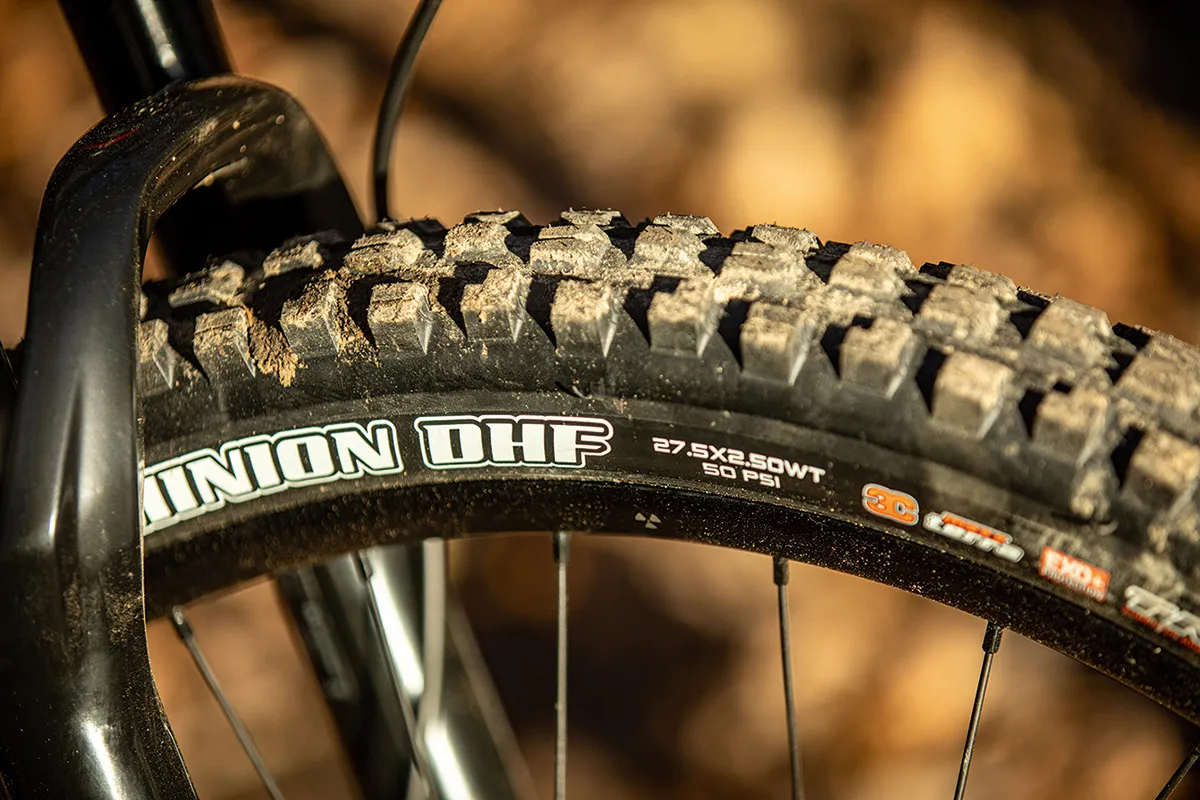
The Ragley is marginally skinnier all over, and sports a reinforcing bridge from seat tube to top tube. However, in a slight counter to this, its 31.6mm seat tube is fatter than the Whyte’s 30.9mm one.
The biggest chassis difference, in terms of geometry, is in bottom bracket height. This dictates where the cranks are positioned relative to the wheel axles, and influences ride quality massively.
The 905’s super-low, sub-300mm BB height puts its 170mm cranks – and therefore your weight, resting on the pedals – very close to the ground, while the Mmmbop’s 314mm BB height makes it feel more traditional and much taller when riding.
Spec details

These two bikes are reasonably well-matched in terms of components. The 905’s fork is the latest-generation RockShox Pike Select with fancy new dials, although its Charger RC damper is the same as in the Mmmbop’s RockShox Yari fork.
This is built tougher and stiffer, which makes it heavier, while the Pike’s increased lower-leg overlap (due to its shorter travel) means it doesn’t exhibit as much flex as you might expect.
It’s not only the amount of travel and stiffness that differs, though, because Whyte also goes off on a bit of a tangent, compared to most other brands, with the fork rake, or offset.
Not only has it opted for a shorter-travel fork, so the bike’s dynamic geometry doesn’t get thrown off too much while riding, but it has also specced the shortest offset RockShox offers (37mm). Both factors really influence handling, and there’s complicated steering science that’s a bit much to delve into here.
Basically, increasing fork offset – which is a measurement of how far the front axle sits in front of the steering axis (effectively, a line drawn down the centre of the head tube) – has a stabilising effect on the front wheel.

Mating this with a stubby stem, such as the 35mm number specced here, brings really natural and neutral steering mannerisms. (Of course, the head angle will play a part, too).
That’s not to say the more common 46mm fork offset on the Ragley feels weird, it just gives it a different steering feel. The Mmmbop’s front wheel pivots more on the crown of the tyre when you twist the bar and tips from side to side more easily.
On the 905, the front wheel arcs in a different place, feels as though it wants to always keep pointing forwards and takes more effort to ‘flop’ over, which is especially noticeable when riding at lower speeds or going uphill.
Talking about climbing, both bikes offer a decent dropper seatpost with enough travel to balance comfortable seated pedalling with the ability to get the saddle fully out of the way for the fun bits.
Whyte’s own-brand remote lever is superior to the Brand-X one on the Ragley, though, and its slightly steeper seat tube angle is better optimised for the steepest climbs, too. We initially found ourselves wriggling to the front of the Mmmbop’s saddle on the ascents, until we inched it forward on the rails.
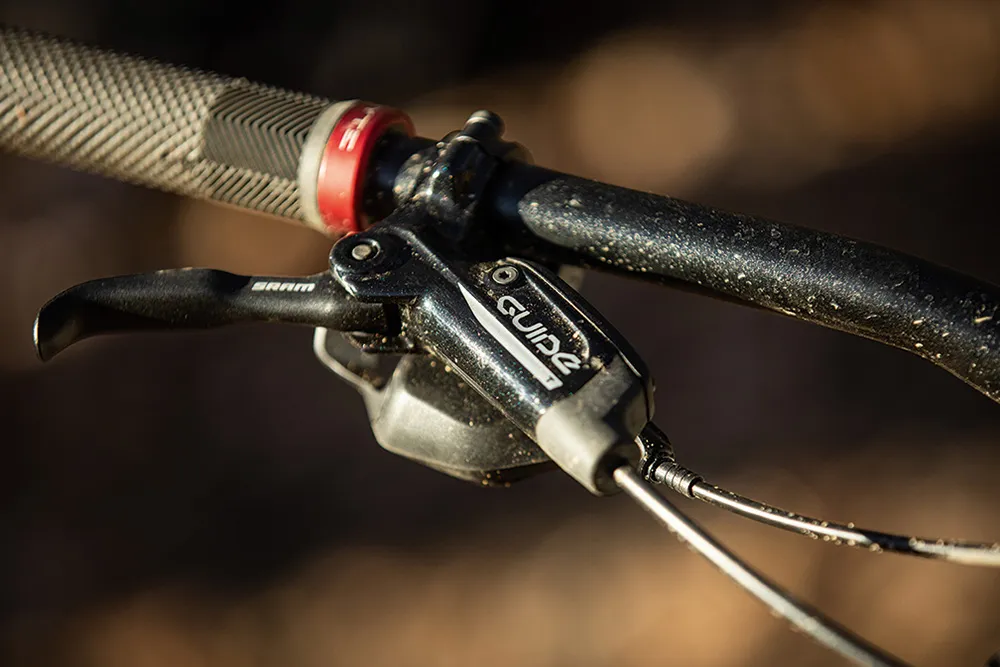
The Ragley gets SRAM’s new affordable DB8 four-pot brakes. We’re not sure why these use mineral oil rather than the brand’s usual DOT fluid, but they work great and have tons of power. This easily trumps the Whyte’s rather wooden-feeling SRAM Guide T brakes, with their more crude lever and bar clamp.
It’s not just stopping power where the Mmmbop triumphs, either. Its Shimano SLX-based drivetrain delivers smoother and more precise gear shifts than the 905’s SRAM NX Eagle setup. Power transfer feels crisper and more urgent, too, with the Ragley’s Race Face cranks noticeably stiffer than the NX ones on the Whyte.
We also suffered a lot of ‘ghost shifts’ on the 905 in muddy conditions, especially further up the cassette, whereas the Shimano kit on the Mmmbop never skipped a beat. This is something we’ve experienced before with NX.
Ragley provides pretty much the perfect Maxxis rubber combo for 90 per cent of UK riding, too – a 2.5in WT Minion DHF front and a 2.4in Minion DHR II rear, both in the (much tougher than it used to be) EXO casing.
The Whyte’s tyres also come from Maxxis – a High Roller II up-front and a Rekon at the rear, both in the slightly lighter EXO casing, and the Rekon in dual- rather than triple-compound rubber. They’re much wider, though, at 2.8in.
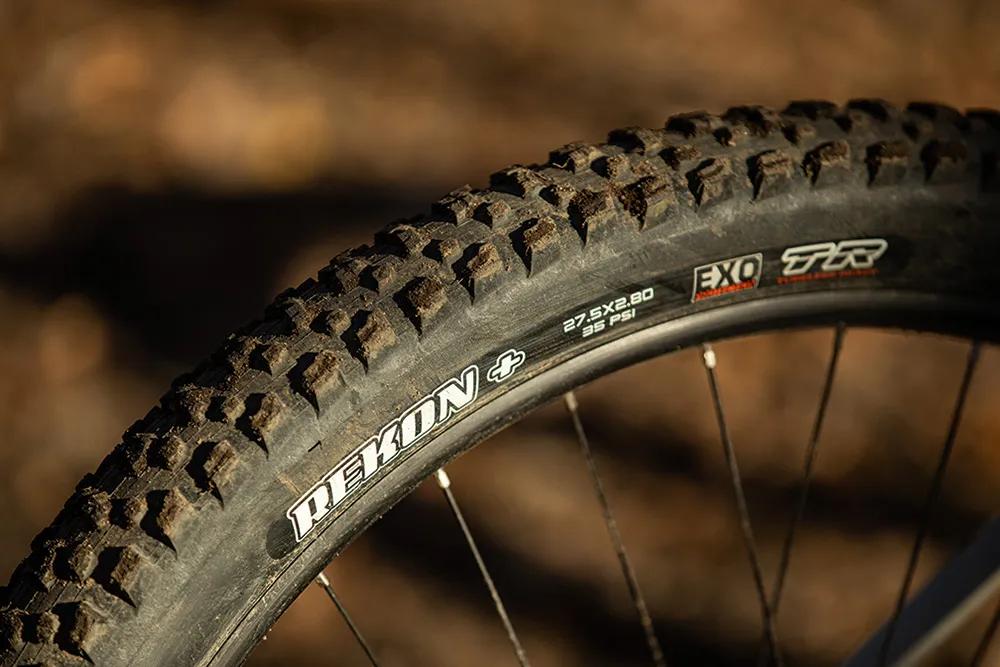
We aren’t the biggest fans of the fat HR II, especially as a front tyre, because there’s a huge gap between the central and shoulder knobs, which comes over as a grip ‘dead zone’ when transitioning into corners. The 905’s tyre combo also lacks sidewall reinforcement for rockier areas, so we punctured the rear on the first ride.
Whyte opts for the extra volume of this ‘plus-size’ setup to add smoothness and rolling speed over bumps, with the aim of ensuring the 905 feels really planted and surefooted for less experienced off-road riders.
It works, too – in the right conditions. But, while 0.3in may not sound like much of a difference, it has a huge impact on performance when it’s muddy. The Ragley’s regular-sized tyres give a much more precise feel.
Ride impressions
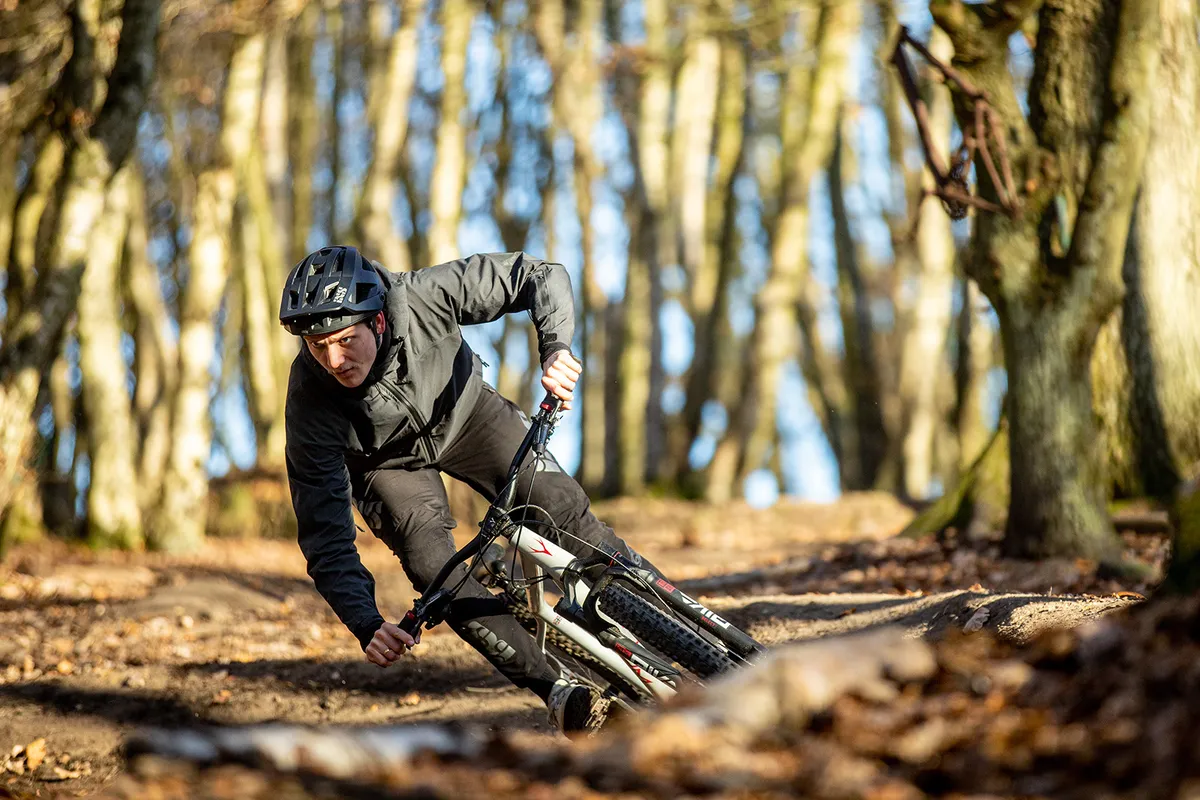
That difference in tyre width has a bigger impact on how these bikes ride than any other aspect of the componentry. In drier conditions, the way the Whyte’s fat tyres float across the trail surface instead of cutting into it isn’t an issue, and the ‘plus’ rubber feels comfy and stable.
On greasier surfaces, however, this translates to a lack of control. Combined with the low tread height of the rear tyre, it means the 905 only really finds grip and traction when it’s dry, which rules out at least half of the year in some areas of the UK.
When it comes to geometry, the biggest difference is in BB height – something that’s immediately obvious from the first pedal stroke. The 905 is so much lower-slung that it feels as if you’re on a full-sus bike that’s squatting into its sag.
In contrast, the Mmmbop, like most hardtails, pushes your hips and lower back up a bit higher and balances slightly more weight on your hands relative to your feet, especially when descending. This sensation is amplified by the Ragley’s longer fork settling slightly deeper into its travel when riding, which again tips your weight forwards.
On the Mmmbop, it feels as if you’re on top of the frame and following the front tyre as it pulls you and the bike down the trail. On the Whyte, it's as though you’re driving the front tyre forwards with your feet and hips, which is a more direct and controlled ride sensation.

You can easily stabilise the Ragley’s handling a bit, though, by doing what we do on a lot of hardtails with longer forks – adding more pressure to the fork’s air spring to keep the bike’s dynamic geometry feeling calmer.
While this could, potentially, compromise front-end comfort and bump-swallowing, it’s not an issue here, because the Ragley’s alloy frame is so comfortable and compliant.
Even with its lower-volume tyres, the Mmmbop dulls vibrations and trail feedback noticeably better than the 905, and there’s never the same sense of small square-edged impacts being really jarring and hitting your feet and legs with sharp jabs at speed.
The Whyte is no ‘nail’, it’s just that the Ragley frame is exceptionally supple and comfy. This smoothness translates to more effective absorption of small bumps and rough surfaces out of the saddle, and a slightly more planted feel on the ground, without the Mmmbop ever feeling so ‘soft’ that it lacks responsiveness or precision.
The stiffer Shimano/Race Face drivetrain on the Ragley ensures power transfer feels tighter and more positive, too (with the flexier NX cranks on the Whyte not seeming to add any extra comfort).

This is boosted by the Mmmbop’s zippier Nukeproof Neutron wheels, which feel as though they accelerate quickly and aren’t too heavy when you’re slogging up tarmac climbs and smooth fireroads.
So, Ragley’s easy-to-manual bike is stiff and solid, but also smoother, feels faster across the ground in most scenarios, and its parts spec works better overall. Sounds like we have a test winner, right?
It’s not that simple, and you can’t write off the 905 that easily, because in terms of handling, Whyte’s lower-to-the-ground design is always more fun and engaging. It's also more stable and assured over demanding terrain.
If the trails lack flow, the 905 miraculously eggs you on to find some, and the rider position and balance (front to rear, with the longer stays) is spot-on.

We love how your feet sit really low and right ‘inside’ the bike, and the steering feel is perfect, too. Whyte has nailed the handling here, with the fork’s increased trail (how far the tyre contact patch ‘trails’ behind the steering axis) acting like a steering damper that keeps you from twitching around. The low centre of gravity means it’s simultaneously easy to tip the bike from side to side.
The resulting ride feels natural from the off. You can fling your weight through turns much better than on the Ragley, as well as cut and swap from side to side in a livelier fashion, if you want to play and jib about on the trails.
A further benefit, if you’re into hitting jumps, is that with your feet lower to the ground, it’s easier to compress your bodyweight to pump the face of the lip for more airtime.
The verdict

If Ragley’s Mmmbop had the same low BB as Whyte’s 905, it’d be a superior bike. It’s tough and durable, the parts selection is top-notch, and the frame is noticeably smoother and more comfortable.
Regardless of the BB height, it’s still a more efficient bike for long rides and one that feels faster on shallower, flowy terrain and when climbing.
The Whyte is also seriously hamstrung by its fatter Maxxis tyres, which surf on mud and will be a winter deal-breaker if you live somewhere with thick, slimy soil.
All that said, you simply can’t ignore the 905’s exceptional handling, especially when the terrain gets steeper and more challenging. It puts such a smile on your face at times that it’s hard not to love it.
It’s one of the few hardtails you can ride almost as hard and fast downhill as a full-sus bike, mainly because you’re in the same stable, planted position, with feet and hips low through flat turns and berms, and a weight-rearward bias down the steepest trickiest, janky sections.
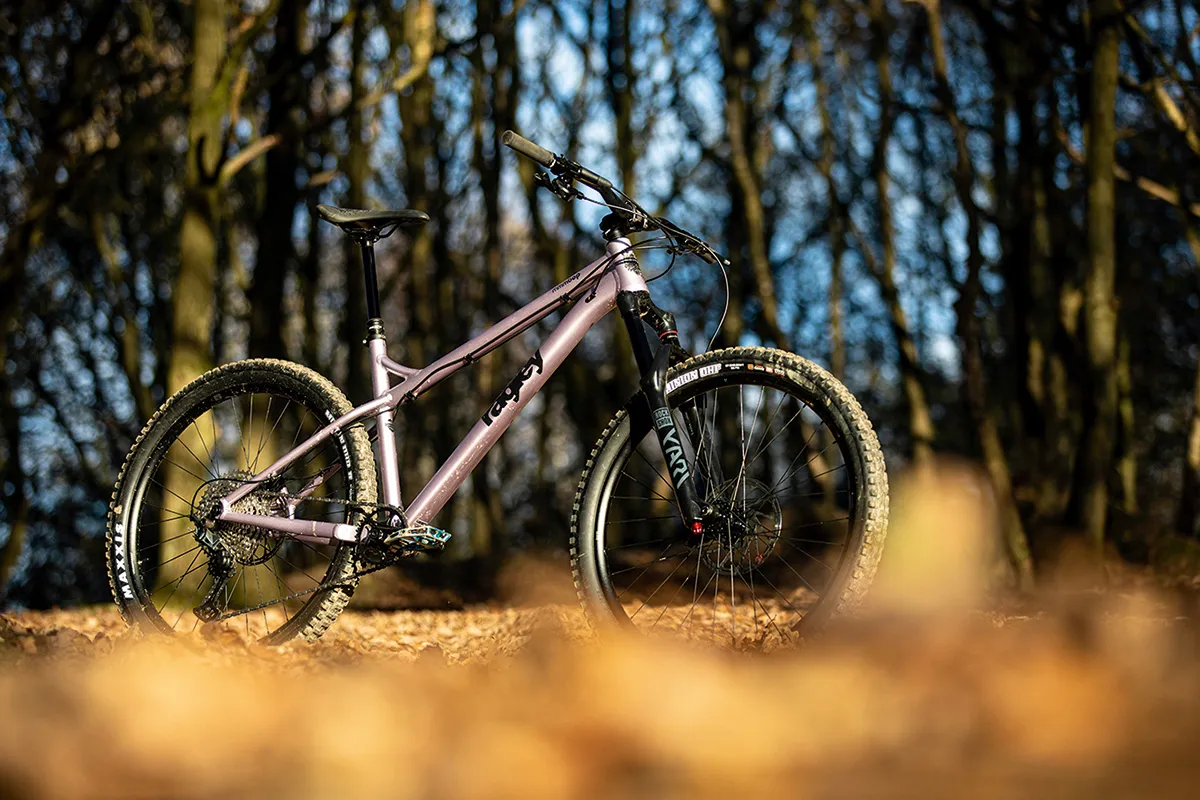
A priority for 650b hardtails is to be chuckable and reactive to body shifts, so we’ve given the Whyte the nod here, while acknowledging it’s not perfect.
Its steering reacts in exactly the way you expect it to, every time you turn the bar, and it balances a planted and undeflectable feel with the ability to switch direction quickly and precisely.
There are drawbacks with some of Whyte’s kit, however, particularly the tyres, and the 35mm (internal) WTB rims mean you can’t easily swap the plus-size rubber for something skinnier.
undefinedundefinedundefinedundefinedundefinedundefinedundefinedundefinedundefinedundefinedundefinedundefinedundefinedundefinedundefinedundefinedundefinedundefinedundefinedundefinedundefinedundefinedundefinedundefinedundefinedundefinedundefinedundefinedundefinedundefinedundefinedundefinedundefinedundefinedundefinedundefinedundefinedundefinedundefinedundefinedundefinedundefinedundefinedundefinedundefinedundefinedundefinedundefinedundefinedundefinedundefinedundefinedundefinedundefinedundefinedundefinedundefinedundefinedundefinedundefinedundefinedundefinedundefinedundefinedundefinedundefinedundefinedundefinedundefinedundefinedundefinedundefinedundefinedundefinedundefinedundefinedundefinedundefinedundefinedundefinedundefinedundefinedundefinedundefinedundefinedundefinedundefinedundefinedundefinedundefinedundefinedundefinedundefinedundefinedundefinedundefinedundefinedundefinedundefinedundefinedundefinedundefinedundefinedundefinedundefinedundefinedundefinedundefinedundefinedundefinedundefinedundefinedundefinedundefinedundefinedundefinedundefinedundefinedundefinedundefinedundefinedundefinedundefinedundefinedundefinedundefinedundefinedundefinedundefinedundefinedundefinedundefinedundefinedundefinedundefinedundefinedundefinedundefinedundefinedundefinedundefinedundefinedundefinedundefinedundefinedundefinedundefinedundefinedundefinedundefinedundefinedundefinedundefinedundefinedundefinedundefinedundefinedundefinedundefinedundefinedundefinedundefinedundefinedundefinedundefinedundefinedundefinedundefinedundefinedundefinedundefinedundefinedundefinedundefinedundefinedundefinedundefinedundefinedundefinedundefinedundefinedundefinedundefinedundefinedundefinedundefinedundefinedundefinedundefinedundefinedundefinedundefinedundefinedundefinedundefinedundefinedundefinedundefinedundefinedundefinedundefinedundefinedundefinedundefinedundefinedundefinedundefinedundefinedundefinedundefinedundefinedundefinedundefinedundefinedundefinedundefinedundefinedundefinedundefinedundefinedundefinedundefinedundefinedundefinedundefinedundefinedundefinedundefinedundefinedundefinedundefinedundefinedundefinedundefinedundefinedundefinedundefinedundefinedundefinedundefinedundefinedundefinedundefinedundefinedundefinedundefinedundefinedundefinedundefinedundefinedundefinedundefinedundefinedundefinedundefinedundefinedundefinedundefinedundefined